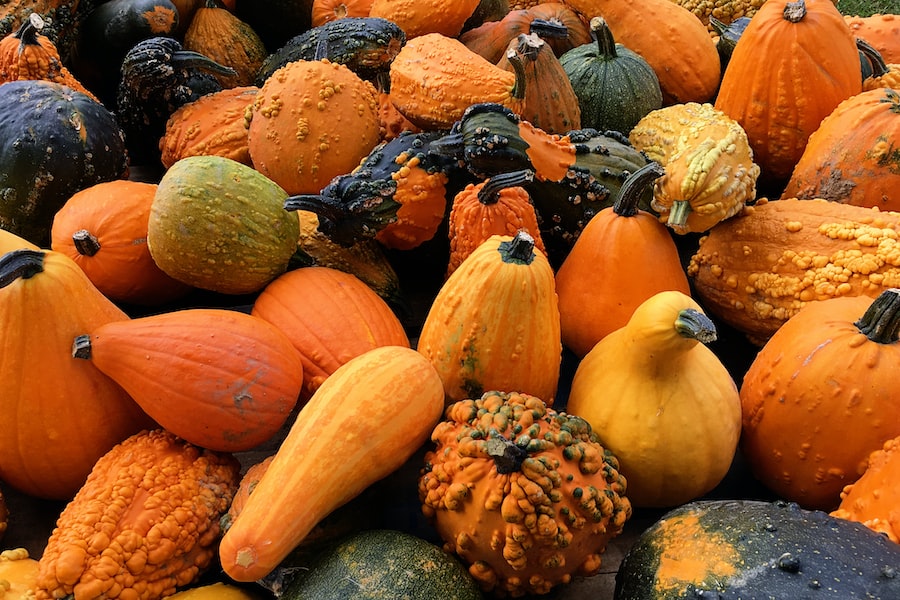When to Harvest Your Spaghetti Squash: A Guide to Picking at Peak Ripeness

Spaghetti squash, also known as vegetable spaghetti or noodle squash, is a unique winter squash variety that gets its name from the stringy flesh that resembles spaghetti noodles when cooked. It is a popular alternative to traditional pasta due to its low calorie and carbohydrate content. Spaghetti squash is rich in vitamins A and C, as well as potassium and fiber, making it a nutritious addition to any diet.
Key Takeaways
- Spaghetti squash is a type of winter squash that is known for its stringy flesh that resembles spaghetti noodles.
- Spaghetti squash grows on a vine and takes about 90-100 days to mature from seed to harvest.
- Factors that affect spaghetti squash ripeness include temperature, sunlight, and water.
- Signs of maturity in spaghetti squash include a hard rind, a dull color, and a dry stem.
- To check spaghetti squash for ripeness, press on the rind and listen for a hollow sound.
- Harvesting spaghetti squash at the right time is important for optimal flavor and texture.
- To harvest spaghetti squash properly, use a sharp knife or pruning shears to cut the stem about 1 inch above the fruit.
- Spaghetti squash can be stored in a cool, dry place for up to 3 months after harvesting.
- Tips for maximizing spaghetti squash yield include proper spacing, regular watering, and fertilization.
- Delicious spaghetti squash recipes include spaghetti squash carbonara, spaghetti squash lasagna, and spaghetti squash with meatballs.
Understanding the Growth Cycle of Spaghetti Squash
Spaghetti squash goes through several stages of growth before it is ready for harvest. It starts as a small seed that is planted in the ground or in a container. After germination, the seedling emerges and begins to grow into a vine. As the vine grows, it produces flowers that eventually turn into small green fruits. These fruits continue to grow and mature over time until they reach their full size and ripeness.
The time it takes for spaghetti squash to mature can vary depending on various factors such as temperature, sunlight, and growing conditions. On average, it takes about 80-100 days from planting to harvest. However, this can be shorter or longer depending on the specific variety of spaghetti squash and the environmental conditions in which it is grown.
Factors Affecting Spaghetti Squash Ripeness
Several factors can affect the ripeness of spaghetti squash. Environmental factors such as temperature and sunlight play a crucial role in determining how quickly the squash matures. Spaghetti squash requires warm temperatures to grow properly, with an optimal range of 70-85 degrees Fahrenheit. It also needs plenty of sunlight to thrive.
Soil conditions are another important factor in determining the ripeness of spaghetti squash. The soil should be well-drained and rich in organic matter. It should also have a pH level between 6.0 and 7.0, which is slightly acidic to neutral.
Watering and fertilization are also critical for the proper growth and ripening of spaghetti squash. The plants need regular watering to keep the soil moist but not waterlogged. Fertilizer should be applied according to the specific needs of the plants, with a focus on providing adequate amounts of nitrogen, phosphorus, and potassium.
Signs of Maturity in Spaghetti Squash
| Signs of Maturity in Spaghetti Squash | Description |
|---|---|
| Color | The skin should be a deep yellow color. |
| Texture | The skin should be hard and tough, not easily punctured. |
| Weight | The squash should feel heavy for its size. |
| Sound | When tapped, the squash should sound hollow. |
There are several signs that indicate spaghetti squash is ripe and ready for harvest. One of the most noticeable changes is in the color and texture of the squash. When immature, spaghetti squash has a pale green or yellow color. As it matures, it develops a deep yellow or orange color. The skin also becomes hard and tough.
The size and weight of the squash can also indicate its maturity. A fully mature spaghetti squash is usually around 8-12 inches long and weighs between 4-8 pounds. However, these measurements can vary depending on the specific variety.
Another sign of maturity is the drying of the stem. When the squash is ready to be harvested, the stem will become dry and brittle. This indicates that the fruit has detached from the vine and is no longer receiving nutrients.
How to Check Spaghetti Squash for Ripeness
There are several methods you can use to check if spaghetti squash is ripe and ready for harvest. Visual inspection is one of the easiest ways to determine maturity. Look for a deep yellow or orange color, as well as a hard and tough skin.
Tapping the squash can also provide clues about its ripeness. A ripe spaghetti squash will produce a hollow sound when tapped, indicating that it is full of flesh and seeds.
If you’re still unsure, you can cut open a small portion of the squash to check its ripeness. The flesh should be firm and stringy, resembling cooked spaghetti noodles.
The Importance of Harvesting Spaghetti Squash at the Right Time

Harvesting spaghetti squash at the right time is crucial to ensure optimal flavor and texture. If harvested too early, the squash may be underdeveloped and lack sweetness. On the other hand, if left on the vine for too long, the squash may become overripe and lose its flavor.
Harvesting at the right time also prevents the squash from rotting or being damaged by pests and diseases. It allows you to enjoy the fruits of your labor at their peak freshness and quality.
How to Harvest Spaghetti Squash Properly
To harvest spaghetti squash properly, you will need a few tools, including a sharp knife or pruning shears and a pair of gardening gloves. Here is a step-by-step guide to harvesting spaghetti squash:
1. Wait until the squash is fully mature. Look for a deep yellow or orange color, a hard skin, and a dry stem.
2. Use the knife or pruning shears to cut the squash from the vine, leaving about 2-3 inches of stem attached to the fruit.
3. Handle the squash gently to avoid bruising or damaging it.
4. Place the harvested squash in a cool, dry place to cure for about 10-14 days. This will help improve its flavor and extend its shelf life.
Storing Spaghetti Squash after Harvesting
After harvesting spaghetti squash, it is important to store it properly to ensure its longevity. The ideal storage conditions for spaghetti squash are cool and dry, with a temperature range of 50-55 degrees Fahrenheit and a humidity level of around 50-70%.
You can store spaghetti squash in a pantry, basement, or garage as long as these conditions are met. Avoid storing it in the refrigerator, as this can cause the squash to spoil more quickly.
Spaghetti squash can be stored for several months if kept in optimal conditions. However, it is important to regularly check for any signs of spoilage, such as mold or soft spots. If you notice any of these signs, it is best to use the squash as soon as possible.
Tips for Maximizing Spaghetti Squash Yield
To maximize your spaghetti squash yield, there are several tips you can follow. First, prepare the soil before planting by adding organic matter such as compost or well-rotted manure. This will help improve soil fertility and drainage.
Watering and fertilization are also important for maximizing yield. Water the plants regularly, keeping the soil evenly moist but not waterlogged. Fertilize the plants according to their specific needs, providing adequate amounts of nitrogen, phosphorus, and potassium.
Pest and disease control is another crucial aspect of maximizing yield. Monitor the plants regularly for any signs of pests or diseases, such as aphids or powdery mildew. Take appropriate measures to control these issues, such as using organic insecticides or fungicides.
Enjoying the Fruits of Your Labor: Delicious Spaghetti Squash Recipes
Once you have successfully grown and harvested spaghetti squash, it’s time to enjoy the delicious fruits of your labor. There are numerous recipe ideas for using spaghetti squash that are both nutritious and tasty.
One popular option is to use spaghetti squash as a substitute for traditional pasta in dishes such as spaghetti and meatballs or carbonara. Simply cook the squash until tender and use a fork to scrape out the flesh, which will resemble spaghetti noodles.
You can also stuff spaghetti squash with a variety of fillings, such as ground meat, vegetables, and cheese. Bake it in the oven until the filling is cooked and the cheese is melted for a satisfying and flavorful meal.
Other recipe ideas include using spaghetti squash in soups, salads, or even as a pizza crust. The possibilities are endless when it comes to incorporating this versatile vegetable into your meals.
Conclusion:
In conclusion, growing and harvesting spaghetti squash can be a rewarding experience. By understanding the growth cycle of spaghetti squash and the factors that affect its ripeness, you can ensure a successful harvest. Harvesting at the right time and storing the squash properly will help maintain its flavor and quality. By following these tips and trying out delicious spaghetti squash recipes, you can enjoy the benefits of this versatile vegetable in your own kitchen. So why not give it a try and start growing your own spaghetti squash today?



